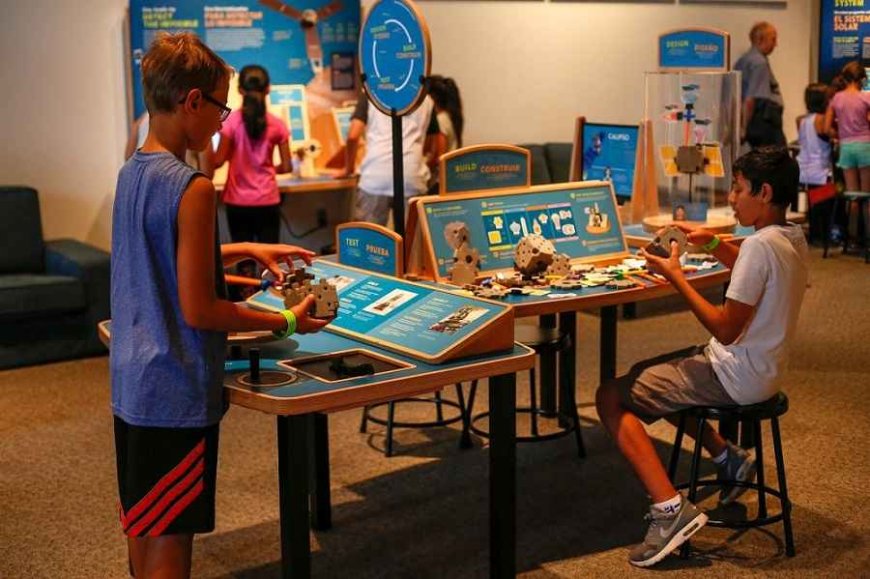Project-Based Learning Ideas: Nurturing Creativity and Critical Thinking in Education
One such approach that has gained significant traction is Project-Based Learning (PBL). PBL offers a departure from conventional classroom

In the ever-evolving landscape of education, traditional methods of instruction are making way for more dynamic and engaging approaches. One such approach that has gained significant traction is Project-Based Learning (PBL). PBL offers a departure from conventional classroom routines by placing students at the center of their own learning journey, fostering creativity, critical thinking, and problem-solving skills. This article delves into the realm of project-based learning ideas, exploring how they cultivate a deeper understanding of subjects and equip students for the challenges of the modern world.
Understanding Project-Based Learning: A Brief Overview
Project-Based Learning is an educational methodology that centers around hands-on experiences and real-world problem-solving. Unlike the traditional lecture-based model, PBL encourages students to immerse themselves in multifaceted projects that address real-life issues. The essence of PBL lies in its capacity to integrate multiple disciplines, enabling students to apply knowledge from various subjects to a single project. By doing so, learners not only gain subject proficiency but also learn to connect the dots between different domains “ a skill crucial in the interconnected world of today.
Project-Based Learning Ideas: Cultivating Knowledge through Creativity
Environmental Sustainability Project:
Students can engage in designing solutions to local environmental challenges, such as waste management, pollution reduction, or water conservation. This project not only imparts scientific knowledge but also instills a sense of responsibility toward the environment.
Historical Reenactment:
History can come alive through the creation of historical reenactments. Students can research a specific period, draft scripts, and perform scenes that provide insights into different eras, fostering a deep understanding of the past.
Community Outreach Initiatives:
Encourage students to identify a need within their community and design projects to address it. This could range from organizing food drives to creating awareness campaigns for social issues, teaching empathy and civic responsibility.
Innovative Technology Prototypes:
With technology becoming integral to daily life, students can delve into designing prototypes of useful apps, devices, or solutions that cater to existing problems. This nurtures creativity and technical skills simultaneously.
Literary Adaptation:
Students can choose a piece of literature and adapt it into a different medium, such as a short film, a series of artworks, or a modern-day retelling. This approach fosters an understanding of literary themes while promoting creativity.
The Benefits of Project-Based Learning
Project-Based Learning offers a myriad of benefits beyond traditional teaching methods:
Critical Thinking and Problem-Solving:
PBL encourages students to grapple with complex problems, stimulating their critical thinking abilities. They learn to analyze situations, break down challenges, and devise innovative solutions.
Collaboration and Communication:
Projects often require collaboration, mirroring real-world professional scenarios. Students learn to communicate effectively, delegate tasks, and work harmoniously toward a shared goal.
Ownership of Learning:
In PBL, students take charge of their learning process. This autonomy fosters a sense of ownership, motivating them to delve deeper into subjects to achieve comprehensive understanding.
Real-world Application:
PBL projects are designed to mirror real-world scenarios, bridging the gap between theoretical knowledge and practical application. This equips students with skills that are directly transferable to professional environments.
Long-lasting Engagement:
Engaging in creative, hands-on projects sustains students' interest and motivation. As they see the tangible results of their efforts, their enthusiasm for learning remains consistently high.
Implementing Project-Based Learning: Challenges and Solutions
While Project-Based Learning has transformative potential, its implementation can be met with challenges. Limited curriculum time, assessment difficulties, and maintaining uniformity are concerns that educators may face. However, these challenges can be overcome:
Curriculum Integration:
Integrating PBL into existing curricula can be achieved through careful planning. Educators can identify subjects that naturally align with project themes, ensuring comprehensive coverage of learning objectives.
Assessment Strategies:
Traditional assessment methods may not align perfectly with PBL. Implementing holistic assessment, including presentations, peer evaluations, and project documentation, provides a more accurate measure of student understanding.
Teacher Training and Support:
Educators may require training to design and manage PBL effectively. Schools can invest in professional development to equip teachers with the necessary skills to guide students through the process.
Diverse Learning Styles:
PBL caters to various learning styles, as it encompasses visual, auditory, and kinesthetic elements. This inclusivity ensures that students with different learning preferences can thrive.
Project-Based Learning transcends conventional education by fostering a holistic learning experience. Through hands-on projects, students not only acquire subject knowledge but also develop essential life skills such as critical thinking, problem-solving, collaboration, and creativity. As educators and institutions embrace this approach, they pave the way for a generation of learners prepared to navigate the complexities of the modern world with confidence and ingenuity.
